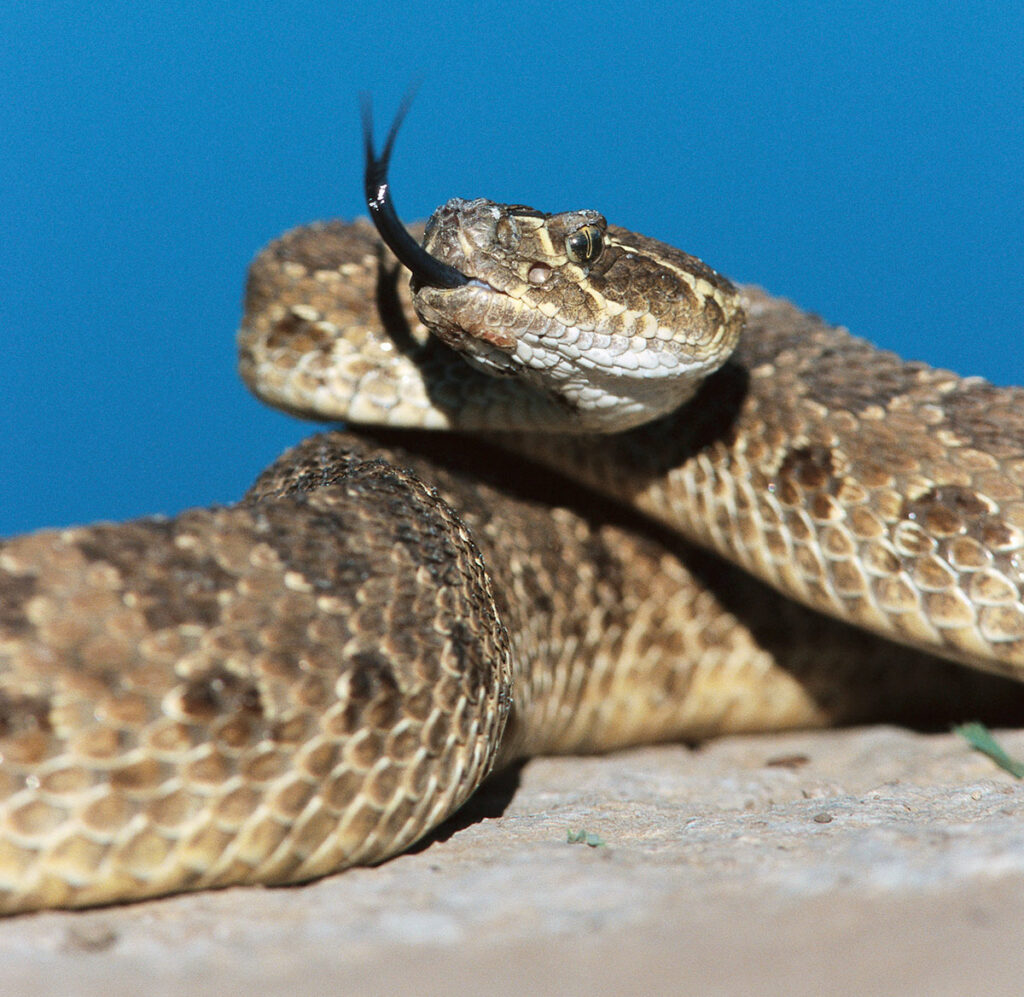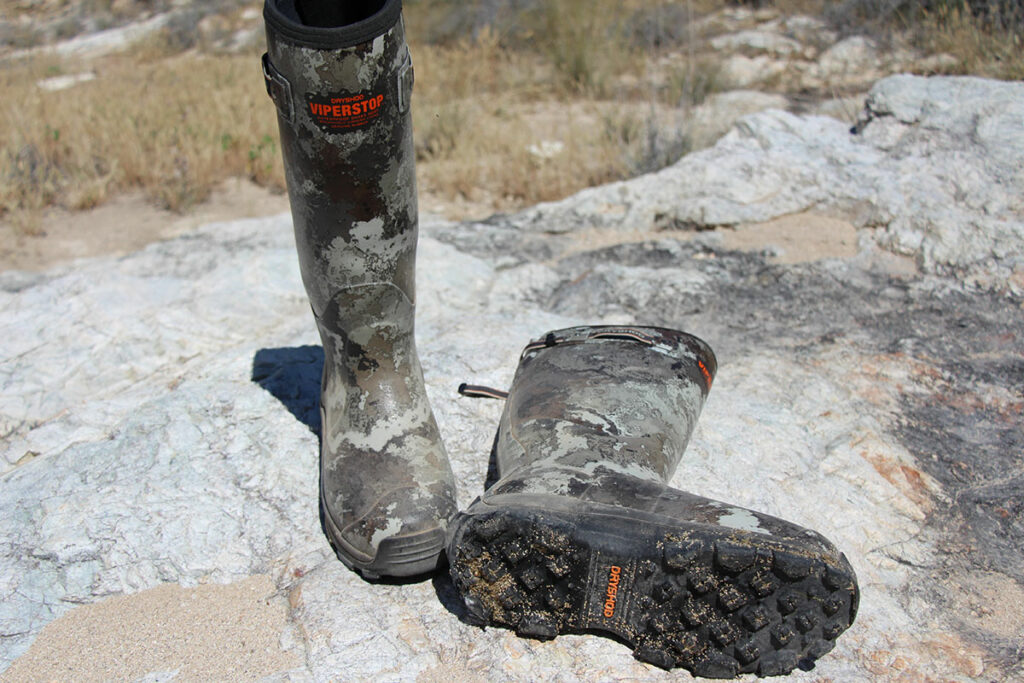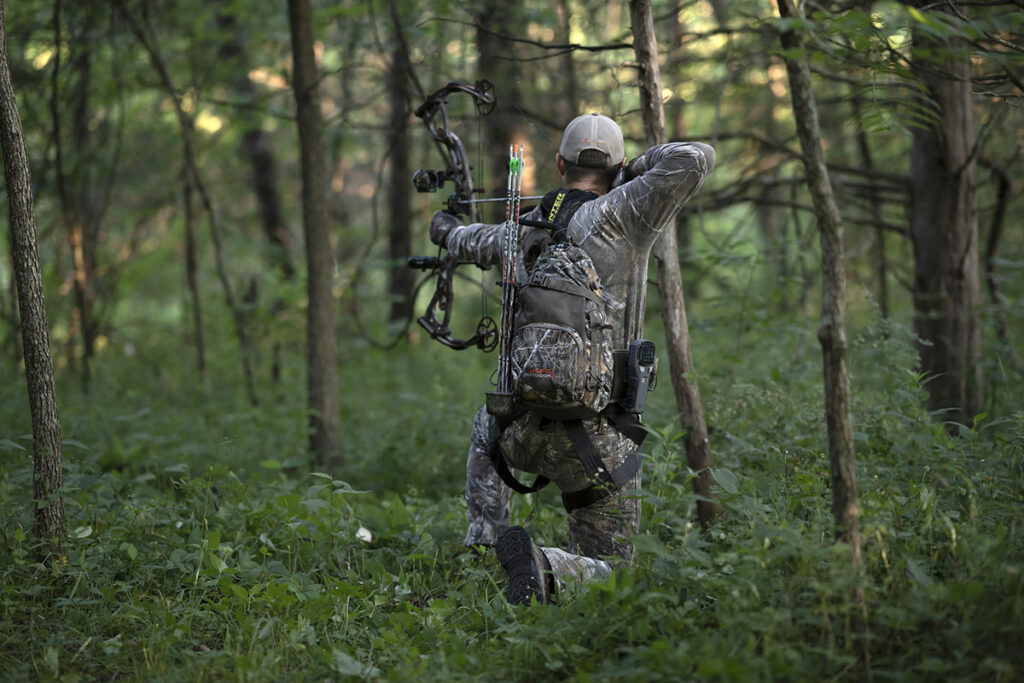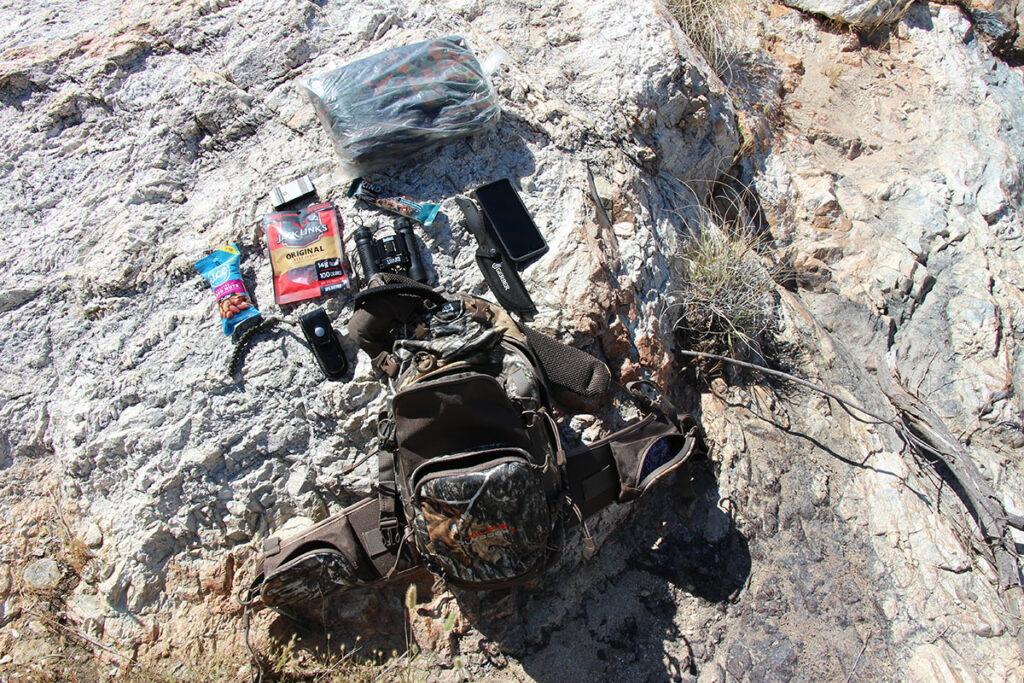Snake Boots And Sling Packs
Two new products provide comfort and confidence in the field.
According to the University of Arizona, there are 17 distinct species of rattlesnake in the U.S. Arizona is home to 13 of those. But, to quote all late-night TV ads, wait…there’s more!
Like the coral snake and the rear fanged vine and lyre snakes. Plus, there’s the Mexican beaded lizard and the Gila Monster (both similar but very different lizards) whose bite is not only poisonous, but both of these reptiles, bite and hold on to deliver the venom into the wound.

If that weren’t enough, there are black widow and brown recluse spiders, scorpions (fun fact, you can usually tell if someone’s from Arizona if they turn their shoes upside down and shake them before they put them on. Always on guard for scorpions or spiders). And then there’s the vegetation. Cacti, Mesquite, Acacia, Palo Verde…you get the picture.
Now don’t get me wrong. The Arizona desert is a beautiful place and despite all of the things that live in it that can do one harm, stupidity is the most dangerous thing of all. We have more hikers rescued for dehydration every year than snake bite or any other injury.
I have been a desert rat for a few decades now and fear of the other desert inhabitants have never deterred me from exploring. But as I get a bit grayer, I find I am looking at products that help make being afield a bit easier with an increasingly covetous eye. So, when I received an info pack from the folks at DryShod boots, I perked up when I saw their ViperStop waterproof snake boots.
Beginning with creating warm, waterproof footwear for farm and outdoor industrial use. DryShod has now expanded into hunting, work and outdoor boots for men, women and kids. DryShod bills itself as the “World’s most wearable rubber boot,” and my experience with the ViperStop makes me a believer. I have to be honest I liked the idea of a high-top snake boot, but I was concerned that wearing a rubber boot in the Arizona desert with summer temps at 90-plus by 10 a.m. I could image pouring sweat out of the boot at the end of the day. Fortunately, that proved to not be the case.
I started my review by taking a walk around my neighborhood. About two miles in total and didn’t find any issues with hot spots or slipping. The boot was comfortable, and the tread actually seemed to be a bit of a shock absorber when walking on both cement sidewalk and street asphalt.
Now, the neighborhood is one thing, but desert trail trekking is quite another. I loaded-up a day pack and headed for the nearby Saguaro National Monument to take the boots off road, as it were. This was early May and by the time I arrived at the trailhead, the temps were already in the low 80s. The trail I chose was a mix of terrain and elevations ranging from dry wash beds and rocky outcroppings to mesquite groves and meadows.

The boots handled the varied terrain without issue and were comfortable for the entire six-mile trek. No, I didn’t run into any rattlers or other venomous creatures of the desert, but then I didn’t think I would, and if I had, I would have used the same strategy that I have used since I began living in the desert. Turn around and go the other direction. At the end of the hike I was pleasantly surprised how comfortable the boot had been. By the time I returned to the trail head the temps were in the 90s and my feet were not tired or uncomfortable.
The ViperStop, like every other snake boot, is not an excuse to go stomping around, trying to anger reptiles. They are a guard against unknowingly stepping on or disturbing snakes in high grass or brush where they can’t always be seen. These boots are also made to minimize any injury by accidently stepping into cholla cactus pods that may have fallen off the parent plant or bumping up against an unseen barrel cactus. The ViperStop will be a perfect hunting boot for desert quail hunts or doing sight and stalk hunts for mule deer or javelina.
_____________________________________________________________________________
So, it’s just before daybreak and you’re gearing-up to head out to find that massive buck you’ve been hoping for. Don’t want to take a full backpack because it’s too heavy and you’ll be coming back at nightfall or sooner. A belt pack is too small to carry everything you might need. A sling pack might work but you’d have to carry water somehow and it has a tendency to flop around if you’re moving in a hurry. A day pack with a water bladder would keep you hydrated, but there’s not much room for stuff and you have to keep taking it off and putting it back on when you need to retrieve something. Well, the ALPS Outdoorz Quickdraw 2.0 may be just what you need.

The QuickDraw is a new variation of a sling pack that provides some of the best features of traditional sling packs, day packs and belt packs. The QuickDraw is built to be a truly ambidextrous pack system, able to accommodate either left or right-handed users equally.
The shoulder strap is changeable for either right or left side load bearing and there are zippers for the main pocket on both the left and the right for easy access to the interior. Like belt packs, the QuickDraw 2.0 has a wide padded belt for additional back support and features pockets for smaller gear (compass, cell phone, etc.). Clip type holsters can also be easily attached to the belt. The sling design allows for swing around access to pack pockets without having to take off the pack.
I took the pack out to the desert trails. I filled the included two-liter water bladder and filled the pack with the kind of stuff one would normally take afield. On the way out, I kept the strap set on the right side. The pack was comfortable, and I didn’t feel any pinch points or hot spots. Adjusting the strap on the move was easy and secure. I filled the water bladder with cold water and the pocket in the pack and the insulated drink hose kept it cool for longer than I thought it would. On the hike back to the trailhead, I switched the strap from the right to the left side. The switch proved to be equally comfortable and was not awkward. All things considered, since I am right-handed, I naturally preferred the strap on the right side instead of the left, but the difference was personal preference only.

In addition to the pockets and storage that comes with the QuickDraw 2.0 the designers have built in a molle webbing system with bungee system to allow the addition of molle pouches. The pack also includes a drop-down pocket that holds rifle or bow securely for quick access when a shot presents itself.
The QuickDraw 2.0 is a great day pack for any hunter, but especially bowhunters, as it allows them to keep their draw arm free.–Randy Gibbs

